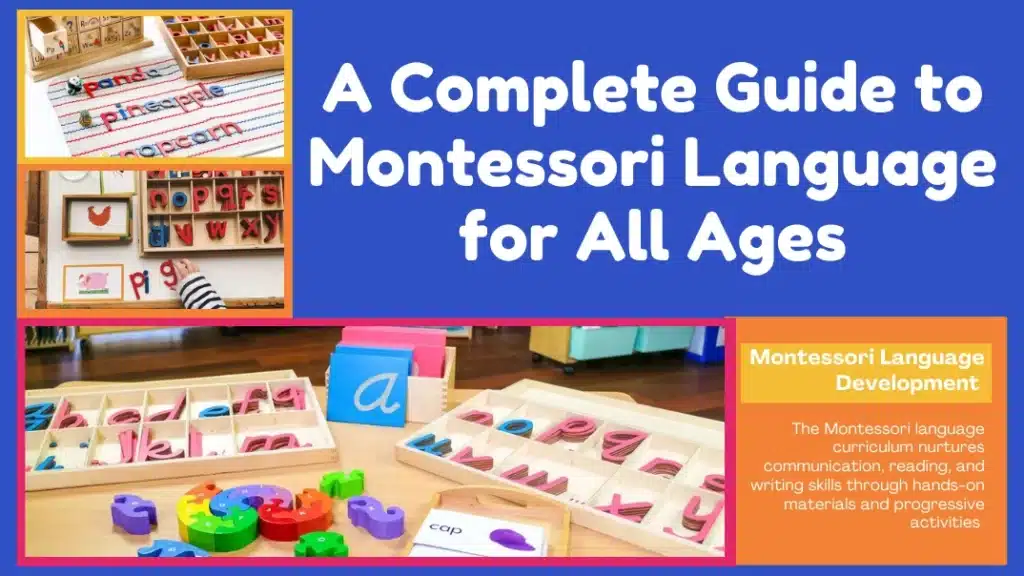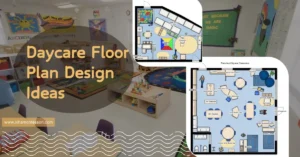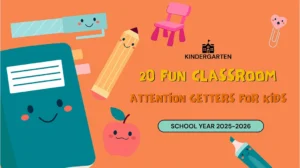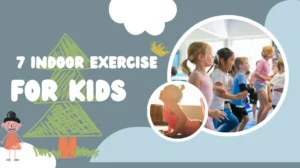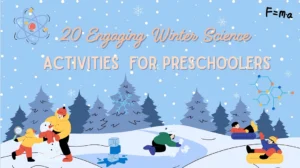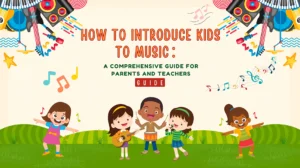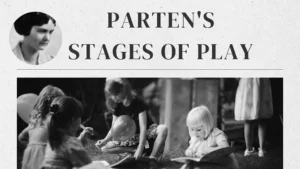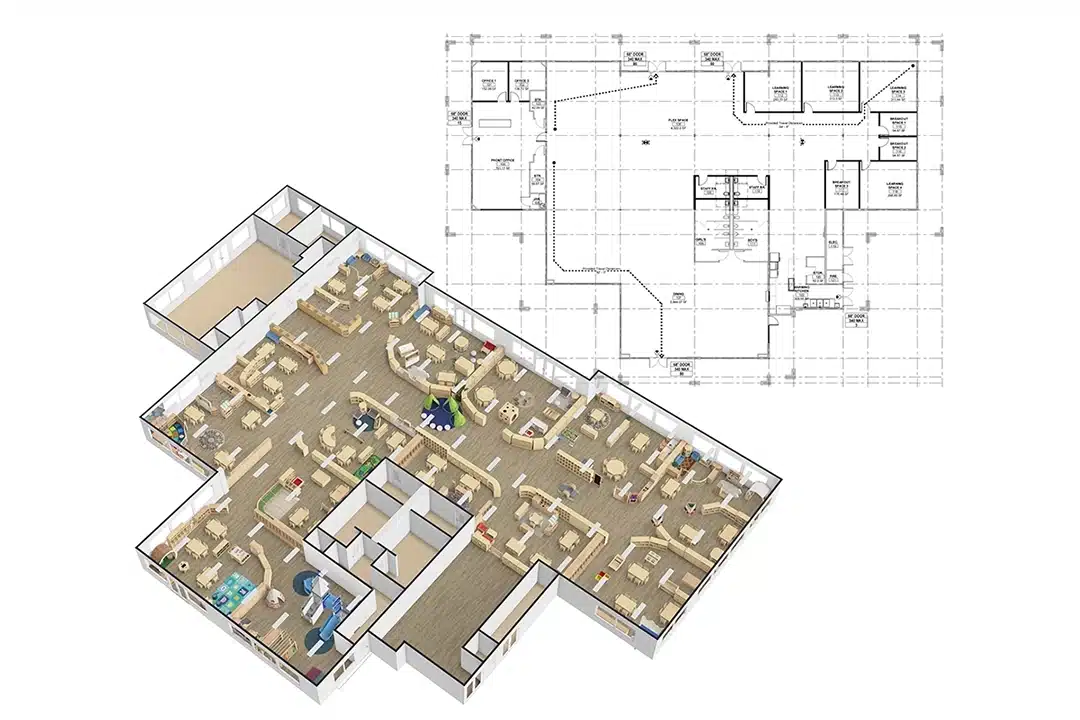Have you ever wondered why some children develop exceptional language skills at an early age while others struggle to keep up? The problem often lies in traditional methods that fail to nurture a child’s natural linguistic abilities. Montessori education solves this challenge with a revolutionary approach to language development that aligns perfectly with a child’s natural learning instincts and creates lifelong learners.
The Montessori language curriculum is uniquely designed to foster communication, reading, and writing through hands-on materials, self-directed activities, and a progressive structure. Integrating language into every learning area ensures children develop strong, lasting skills in an engaging and supportive environment.
But how exactly does the Montessori method achieve such remarkable results? What makes its approach to language development so effective compared to traditional systems? This article will uncover the core principles, practical tools, and specific activities that make the Montessori language curriculum a transformative learning experience for children of all ages. Whether you’re a parent, teacher, or simply curious about Montessori education, this guide will give you everything you need to know to help children thrive in language learning.

Montessori Language Philosophy
The Montessori philosophy recognizes that language is a cornerstone of human development. Dr. Maria Montessori emphasized that language is not just a tool for communication but a way for children to understand the world and express themselves. In Montessori education, language supports all areas of learning, making it an integral part of the curriculum.
Importance of Language in Montessori
Language plays a vital role in Montessori classrooms. It is deeply integrated into every activity and subject, fostering a child’s cognitive, emotional, and social development. The Montessori language curriculum is designed to help children acquire oral and written language skills through hands-on materials and real-life experiences. During the sensitive period for language, which occurs from birth to around six years old, children absorb language effortlessly, making this phase crucial for building a strong foundation in communication.
Montessori teachers create an environment rich in language, using tools like Montessori language materials and language objects Montessori to engage children. These materials make abstract language concepts tangible, helping children connect words to their meanings.
Montessori Sensitive Period for Language
The sensitive period for language, one of Maria Montessori’s key observations, is when children are naturally attuned to language learning. During this phase, Montessori classrooms provide activities that nurture oral language, phonemic awareness, and early literacy. Tools like Montessori sandpaper letters, sound boxes Montessori, and the moveable alphabet are introduced to help children recognize and reproduce sounds, laying the groundwork for reading and writing.
By capitalizing on this sensitive period, Montessori educators ensure children develop a deep love for language. They encourage the exploration of vocabulary, sentence structure, and storytelling, creating a holistic language experience.
Montessori Language Development Principles
Montessori’s approach to language is based on several core principles:
- Immersion in a Language-Rich Environment: Children are surrounded by spoken and written language, allowing them to absorb vocabulary and grammar naturally.
- Hands-On Learning: Materials like Montessori phonetic objects and language cards Montessori connects physical exploration with linguistic concepts.
- Self-Paced Progress: Children engage with activities like DIY Montessori language materials at their own pace, fostering independence and confidence.
- Integration Across Subjects: Language learning is not isolated but incorporated into science, art, and practical life activities.
Through these principles, Montessori ensures children build a strong linguistic foundation while developing essential life skills.


Introduction to Language in Montessori
Language is a cornerstone of Montessori education, integrated into every part of the classroom. The Montessori language curriculum focuses on nurturing children’s natural ability to learn language by providing an environment filled with meaningful conversations, hands-on activities, and interactive materials.
What is Language in Montessori?
In Montessori, language is viewed as a process that evolves naturally. It begins with oral language, where children develop speaking and listening skills through storytelling, naming activities, and everyday conversations. As their understanding grows, children are introduced to writing and reading using Montessori language materials like sandpaper letters, phonetic cards, and sound boxes.
This method differs from traditional approaches by prioritizing hands-on exploration. For instance, children learn the shape and sound of letters through tactile experiences with Montessori sandpaper letters, which make learning more engaging and memorable.
Maria Montessori’s Approach to Language Development
Dr. Montessori believed that children learn language most effectively in an environment that supports their natural curiosity. Her approach emphasizes the role of the prepared environment, where everything is designed to encourage communication and language growth.
Key elements of this approach include:
- Phonetic Awareness Activities: Materials like Montessori language boxes and sound objects teach children to recognize and match sounds to letters.
- Writing Before Reading: In Montessori, writing is introduced before reading because it allows children to express themselves freely and build confidence with language.
- Interactive Learning: Tools such as the moveable alphabet Montessori enable children to form words and sentences independently, reinforcing their understanding of language structure.
By combining structured activities with self-directed exploration, Montessori creates an engaging and practical learning experience.
Montessori Method of Teaching Language
The Montessori method of teaching language revolves around the principle of “learning by doing.” Teachers guide children through carefully designed activities that progress from simple to complex. For example:
- Oral Language Development: Storytelling, songs, and rhymes help children build vocabulary and improve pronunciation.
- Phonetic Learning: Materials like the pink series Montessori introduce phonics, enabling children to decode words and understand their meanings.
- Writing and Reading: Using tools like the moveable alphabet, children construct words before they start reading books, ensuring they understand the connection between sounds and symbols.
This hands-on approach ensures that children develop a love for language while building critical skills at their own pace.
Montessori Language Curriculum
The Montessori language curriculum is a comprehensive program that supports the development of communication skills from early childhood through elementary years. It integrates hands-on materials, structured activities, and a child-centered approach to foster oral language, writing, reading, and advanced linguistic abilities. This curriculum is adaptable to various cultural and linguistic contexts, making it a universal tool for language education.
Overview of Montessori Language Curriculum
The Montessori language curriculum is thoughtfully designed to follow a natural progression:
- Oral Language Development: Laying the foundation through conversations, storytelling, and phonetic activities.
- Writing Skills: Developing fine motor skills and creativity using materials like the moveable alphabet Montessori and Montessori sandpaper letters.
- Reading Proficiency: Introducing phonetic reading tools like the pink, blue, and green series Montessori and language cards Montessori to build fluency and comprehension.
The curriculum leverages Montessori language materials such as phonetic objects, sound boxes, and grammar symbols to make abstract concepts tangible. This structured approach ensures children progress at their own pace while mastering core language skills.
Montessori Language Arts Curriculum
The Montessori language arts curriculum takes literacy further by integrating advanced linguistic elements such as grammar, sentence structure, and creative expression. Key features include:
- Grammar Boxes and Symbols: Teaching parts of speech through visual and interactive tools.
- Creative Writing Activities: Encouraging children to write stories, poems, and letters using Montessori writing tools.
- Reading Comprehension: Developing critical thinking and analytical skills by discussing stories and texts.
This curriculum strengthens language mechanics and nurtures a child’s imagination and self-expression, ensuring they become confident communicators.
Montessori Preschool Language Curriculum
For preschool-aged children, the Montessori language curriculum focuses on building foundational skills through interactive and sensory-based activities. Highlights include:
- Oral Language Activities: Songs, rhymes, and conversations to enhance vocabulary and pronunciation.
- Phonetic Awareness: Using tools like sandpaper letters, Montessori, and sound boxes, Montessori will teach letter sounds and phonics.
- Pre-Writing Skills: Developing hand strength and coordination with tracing activities and the moveable alphabet Montessori.
This phase aligns with the sensitive period for language in children aged 3-6, making it a crucial time to introduce structured yet playful learning experiences.
Dual and Intercultural Montessori Language
Many Montessori schools offer dual-language programs and intercultural Montessori language education in today’s multicultural world. These programs:
- Expose Children to Multiple Languages: Helping them develop bilingual or multilingual skills.
- Promote Cultural Understanding: Introducing children to diverse linguistic and cultural perspectives, fostering empathy and global citizenship.
- Support Cognitive Development: Studies show that learning multiple languages enhances problem-solving, memory, and critical thinking abilities.
By integrating these programs, Montessori language education becomes a tool for communication and a bridge between cultures.



Montessori Language Development for Preschoolers
Preschool is a critical stage for language development, and the Montessori language curriculum offers a structured yet flexible approach to nurturing this growth. During this sensitive period, children’s brains are highly receptive to absorbing language, making it the perfect time to introduce foundational skills through hands-on activities and engaging materials.
Key Recommendations for 3-6 Years
The Montessori language curriculum for children aged 3-6 years focuses on creating an environment where language learning happens naturally. Some key recommendations include:
- Create a Language-Rich Environment: Surround children with spoken and written language using Montessori language materials such as sandpaper letters and phonetic objects.
- Encourage Daily Conversation: Teachers and parents should model clear speech and actively engage children in meaningful conversations to enhance oral language development.
- Introduce Phonics Early: Start with simple phonetic sounds using tools like sound boxes Montessori to help children connect sounds with letters.
Following these steps, children can build a strong foundation for oral and written communication.
Montessori Language Activities for 2, 3, and 4-Year-Olds
Activities tailored for younger learners focus on play-based learning and sensory exploration. Examples include:
- Phonetic Matching Games: Use phonetic cards in Montessori to help children associate sounds with pictures.
- Tracing Letters: Introduce sandpaper letters Montessori for tactile learning of letter shapes and sounds.
- Storytime and Songs: Read books and sing songs that promote listening skills and expand vocabulary.
For 4-year-olds, activities become more advanced, such as practicing word-building with the moveable alphabet Montessori, which lays the groundwork for writing.
Montessori Sensitive Period for Language Learning
Dr. Maria Montessori identified the sensitive period for language as when children are most eager and capable of learning language. Children can absorb language effortlessly between birth and age six if given the right tools and environment.
During this time, Montessori educators focus on:
- Expanding Vocabulary: Using Montessori vocabulary cards and small objects to introduce new words.
- Developing Phonemic Awareness: Activities like matching sounds to letters using language boxes Montessori.
- Encouraging Writing Before Reading: Tools like the pink series Montessori allow children to form simple words before progressing to reading.
This sensitive period lays the foundation for lifelong language skills.
| Focus Area | Activities | Materials Used | Purpose |
|---|---|---|---|
| Oral Language Development | – Daily conversations with teachers and peers – Storytime and singing songs | None (interactive and verbal activities) | Enhance vocabulary, listening skills, and social communication |
| Phonetic Awareness | – Matching sounds to letters – Phonetic games and rhyming activities | – Sound boxes Montessori – Phonetic cards Montessori | Build foundational reading skills and phonemic awareness |
| Pre-Writing Skills | – Tracing letters – Holding writing tools like chalk or pencils | – Sandpaper letters Montessori – Moveable alphabet Montessori | Strengthen fine motor skills and introduce letter shapes |
| Vocabulary Expansion | – Naming activities – Object-to-word matching | – Montessori vocabulary cards – Phonetic objects Montessori | Connect abstract words with tangible meanings |
| Independent Exploration | – Self-directed activities in a prepared environment | – Language shelves Montessori – DIY Montessori language materials | Encourage autonomy and confidence in learning |
| Reading Readiness | – Forming words with the moveable alphabet – Decoding simple CVC (Consonant-Vowel-Consonant) words | – Moveable alphabet Montessori – Pink series Montessori | Develop early reading skills and prepare for more advanced literacy activities |



Montessori Language Materials: Types and Applications
The Montessori language materials are the cornerstone of language education in Montessori classrooms. These carefully designed tools provide children with hands-on, multi-sensory experiences that make language concepts tangible and easy to understand. Below, we explore the main types of Montessori language materials, their applications, and how they support various stages of language learning.
Overview of Montessori Language Materials
Montessori language materials are designed to progress from simple to complex, matching a child’s developmental stages. The materials include:
- Sandpaper Letters Montessori: For learning letter shapes and sounds through tactile tracing.
- Moveable Alphabet Montessori: To help children construct words and sentences.
- Pink, Blue, and Green Series Montessori: For step-by-step phonetic progression in reading.
- Sound Boxes Montessori: To develop auditory discrimination and phonemic awareness.
- Montessori Grammar Boxes and Symbols: Learning parts of speech and sentence structure.
These materials foster independence and creativity, allowing children to explore language at their own pace.
Sandpaper Letters and Moveable Alphabet
Sandpaper letters Montessori are among the first materials introduced to children.
- How They Work: Children trace each letter while saying its corresponding sound, simultaneously engaging their sense of touch and hearing.
- Applications: Used to teach uppercase and lowercase letters and prepare children for writing.
Montessori’s moveable alphabet builds on this foundation by allowing children to construct words and sentences.
- Why It’s Important: These materials enable children to practice spelling and word formation long before they can physically write with a pencil.
Montessori Pink, Blue, and Green Series
The pink, blue, and green series Montessori are designed to guide children through the stages of reading development:
- Pink Series: Focuses on simple three-letter words (CVC words like “cat” and “dog”).
- Blue Series: Introduces consonant blends and more complex words.
- Green Series: Covers phonograms and advanced reading skills, such as “sh” and “ch” sounds.
These materials are paired with language cards Montessori and phonetic objects Montessori to provide visual and tactile learning.
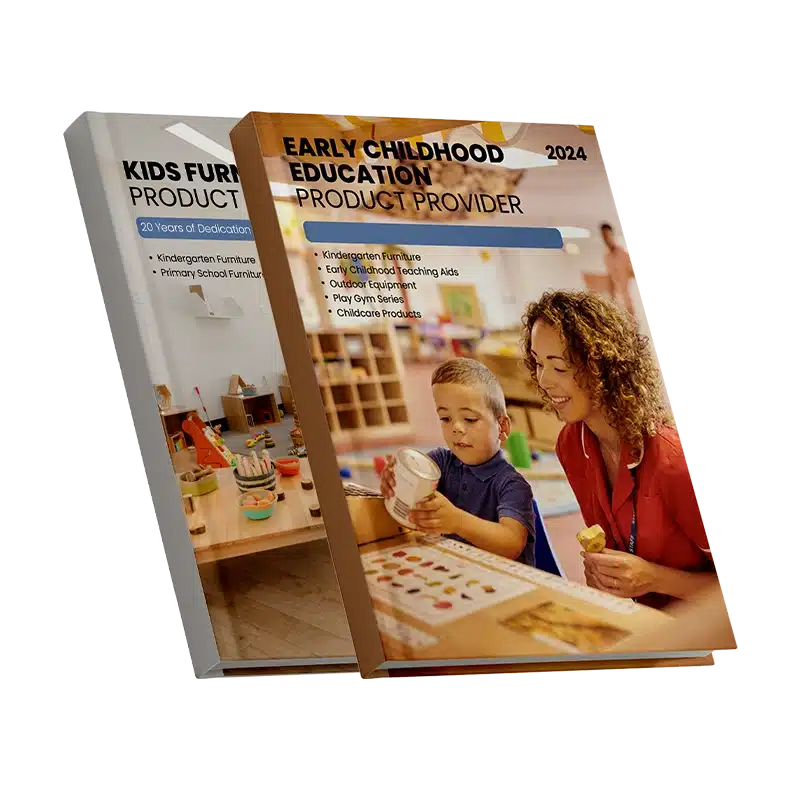
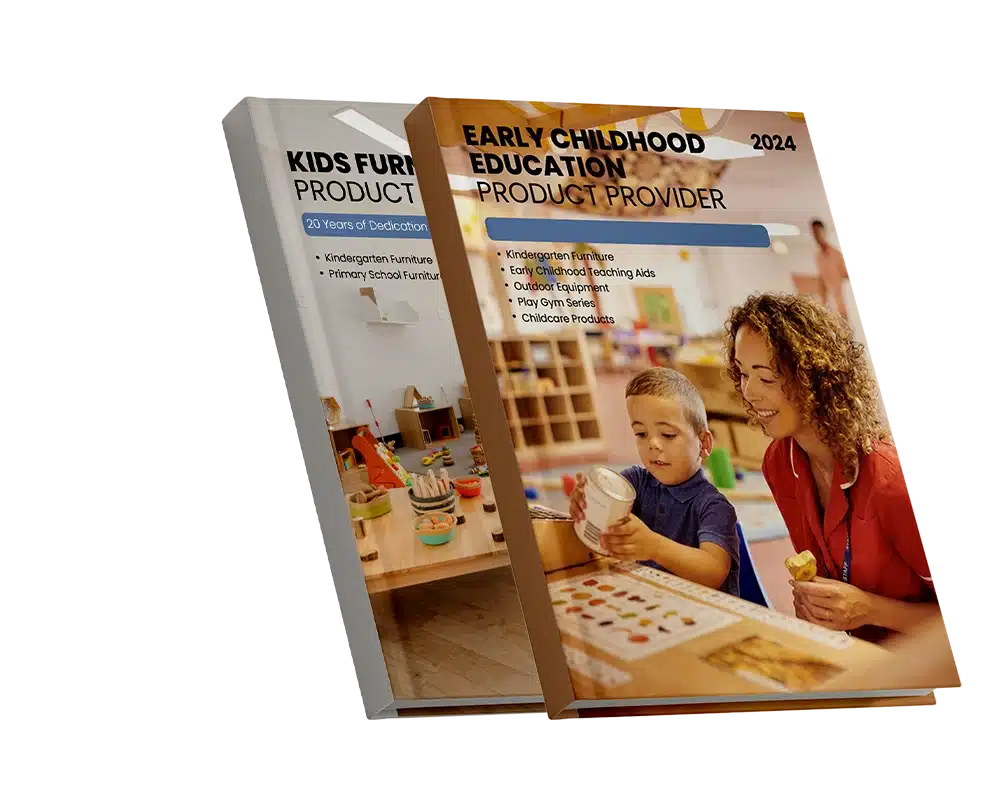
Montessori Language Objects and Small Objects
Small objects are a favorite in Montessori classrooms because they connect abstract words with tangible items. For example:
- A small plastic apple can represent the sound “a” or the word “apple.”
- Children use these objects in activities like sound matching and word building.
Applications: These objects are essential for phonics games, vocabulary building, and sentence construction.
DIY Montessori Language Materials
Creating DIY Montessori language materials is a cost-effective way to implement Montessori at home or in classrooms:
- Homemade Sandpaper Letters: Use textured paper and cardboard.
- DIY Vocabulary Cards: Print pictures and words from magazines.
- Phonetic Objects from Home: Use toys, small items, or household objects for sound-matching games.
Montessori Language Materials Sequence
The sequence of materials is key to ensuring children progress naturally:
- Sandpaper Letters: Introduced first to teach letter shapes and sounds.
- Moveable Alphabet: Used for word-building before introducing writing tools.
- Pink Series Montessori: Followed by blue and green series for reading development.
Each material builds on the previous one, ensuring a smooth progression in language learning.




Language in the Montessori Classroom
Language Area in Montessori Classrooms
The language area in Montessori classrooms is a dedicated space designed to nurture children’s language skills. This area is carefully arranged to support self-directed learning and exploration of language.
- Purpose: The language area allows children to independently engage with materials that support phonetic awareness, vocabulary building, and reading skills.
- Materials Included:
- Sandpaper letters Montessori: For learning the shapes and sounds of letters through tactile exploration.
- Moveable alphabet Montessori: For building words and constructing simple sentences.
- Phonetic objects Montessori: Small items representing sounds or words, used in matching and identification activities.
- Montessori grammar boxes: For introducing parts of speech and sentence construction.
- Structure: Materials are organized sequentially, from simple to complex, ensuring a logical progression in learning.
The language area creates an inviting environment where children feel empowered to explore language at their own pace.
Role of Oral Language in Montessori
Oral language is fundamental in the Montessori classroom. It is the foundation for communication and is closely linked to a child’s ability to read and write.
- Activities:
- Storytelling: Teachers share stories to introduce new vocabulary and sentence structures.
- Songs and Rhymes: These activities help children recognize patterns in language and improve memory.
- Group Discussions: Children practice expressing their ideas and listening to others.
- Purpose: Oral language activities build vocabulary, enhance listening skills, and prepare children for phonetic and literacy work.
Through oral language, children develop a strong foundation supporting their writing language progression.
Montessori Language Shelves and Their Purpose
The Montessori language shelves are critical in organizing materials that support language learning. These shelves are designed to be accessible and engaging for children.
- What They Include:
- Sandpaper letters Montessori: To teach the sounds and shapes of letters.
- Moveable alphabet Montessori: For forming words and simple sentences.
- Pink, blue, and green series Montessori: For progressing through phonetic reading stages.
- Montessori grammar boxes: For learning parts of speech with hands-on activities.
- Purpose:
- Encourage Independence: Children can choose materials that align with their interests and readiness.
- Support Sequenced Learning: The materials are arranged logically, helping children build on existing knowledge.
The language shelves are central to the Montessori approach, providing a clear and structured path for language development.
Montessori Language Activities
Language activities in Montessori classrooms are foundational for developing strong communication skills. These activities combine oral language practice, phonetic exploration, and interactive tasks to create an engaging and effective learning environment.
General Language Activities in Montessori
In Montessori classrooms, general language activities integrate naturally into everyday routines. These activities help children expand their vocabulary and improve listening and speaking skills while fostering curiosity and confidence.
improve listening and speaking skills while fostering curiosity and confidence.
| Activity | How It Works | Purpose |
|---|---|---|
| Storytelling | Teachers tell stories, encouraging children to listen and later retell the story. | Builds comprehension, sequencing skills, and vocabulary. |
| Naming Activities | Teachers name objects in the environment and ask children to repeat them. | Expands vocabulary and reinforces word-object association. |
| Vocabulary Card Matching | Children match images to words using Montessori vocabulary cards. | Enhances word recognition and phonetic understanding. |
For example, during a storytelling session, a teacher might narrate a story about animals in a forest and then ask children to identify the animals on vocabulary cards or describe them in their own words. This combines listening, visual learning, and verbal expression.
Montessori Language Games and Tasks
Montessori language games and tasks make learning interactive and enjoyable, allowing children to playfully explore phonetics, rhymes, and word-building.
- Phonetic Matching: Children use phonetic objects in Montessori to pair small items like a “cat” or “bat” with their starting sounds. This game reinforces the connection between sounds and letters.
- Building Words with Moveable Alphabet: The moveable alphabet Montessori allows children to spell words by arranging letters on a mat, starting with simple words like “dog” and gradually progressing to sentences.
- Rhyme Recognition Games: Using Montessori rhyme cards, children identify rhyming words, improving their ability to recognize sound patterns.
- Language Sorting Boxes: With language boxes Montessori, children sort items or words by sound, letter, or category (e.g., “b” words like “ball” and “bat”).
These activities make abstract language concepts concrete and encourage children to engage actively with words and sounds.
Oral Language Exercises in Montessori
Oral language is the foundation of communication, and Montessori classrooms emphasize this skill through daily exercises. These activities focus on building confidence in speaking, improving listening skills, and expanding vocabulary.
For instance, group discussions during circle time allow children to share their thoughts on various topics, such as their favorite foods or recent activities. Teachers also use role-playing exercises, where children act out scenarios like going to a shop or traveling on a bus, allowing them to practice conversational skills in real-world contexts.
Another popular exercise involves describing objects. A teacher might present an apple and ask children to describe its color, shape, and taste. This not only builds descriptive language but also helps children develop observational skills.
Songs and rhymes are also integral to oral language exercises. Singing familiar songs helps children recognize patterns in language, while rhymes enhance their auditory discrimination and memory. These oral activities lay the groundwork for reading and writing by making children comfortable with sounds and words.
Montessori Preschool Language Curriculum
The Montessori preschool language curriculum is designed to nurture the natural curiosity and linguistic development of children between the ages of 3 and 6. During this period, children are highly receptive to absorbing language, and the curriculum focuses on building foundational skills in phonetics, oral language, and early literacy.
Word Study and Sentence Analysis
In preschool, word study and sentence exploration begin with simple, playful activities that introduce children to language structure.
- Word Study: Preschoolers use phonetic objects Montessori and vocabulary cards Montessori to associate sounds with words. For example, a card featuring a picture of a “cat” helps children link the spoken word “cat” to its written form.
- Sentence Introduction: Children are encouraged to form simple sentences using the moveable alphabet Montessori, creating phrases such as “The cat runs.” Teachers then guide them in understanding the basic structure of these sentences.
These activities provide the groundwork for more formal grammar work in elementary years, ensuring children are confident with basic language concepts.
Montessori Language Work for Preschool
Preschool language work focuses on oral communication and the early stages of reading and writing. The sandpaper letters Montessori are one of the most commonly used tools for introducing phonetics.
- Phonetic Exploration: Children trace the rough texture of the sandpaper letters while repeating their corresponding sounds. This multi-sensory activity enhances memory and helps children recognize letters visually and by sound.
- Pre-Writing Skills: Children learn to build words long before mastering pencil grip using the moveable alphabet Montessori, reducing frustration and encouraging creativity.
Additionally, storytelling and rhyming games enhance listening skills and build vocabulary naturally and engagingly.
Montessori Green Language Series
Montessori’s green series builds upon the pink and blue series, introducing advanced phonograms and spelling rules.
- Focus Areas: Sounds like “sh,” “ch,” “ph,” and “th” are taught using word lists, phonogram cards, and small objects.
- Interactive Practice: For example, a teacher might use the word “ship” and a corresponding image or object to reinforce the “sh” sound.
- Purpose: This stage prepares children for fluent reading and more accurate writing, setting the stage for elementary-level literacy work.
Language Development in Montessori
Language development is a central tenet of Montessori education, reflecting Dr. Maria Montessori’s belief that language is a natural part of human growth. The Montessori approach views language as a bridge between self-expression and understanding the world.
The Purpose of Language in Montessori Education
Language in Montessori classrooms serves three key purposes:
- Self-Expression: Through language, children articulate their thoughts, emotions, and ideas. Activities such as storytelling and role-playing allow children to express themselves freely.
- Cognitive Development: Language activities like word study and sentence analysis enhance problem-solving and critical thinking.
- Connection to the World: Language is integrated into cultural studies, where children learn about different regions, histories, and scientific concepts through rich vocabulary and discussions.
By embedding language into all curriculum areas, Montessori education ensures that children see it as a tool for exploration and connection.
Montessori Language Development Chart
The progression of language development in Montessori can be visualized through the following chart:
| Age Group | Focus Area | Key Activities and Materials |
|---|---|---|
| 0-3 years | Oral language and sound recognition | Naming objects, singing songs, rhyming games |
| 3-6 years | Phonetics and pre-writing | Sandpaper letters Montessori, moveable alphabet |
| 6-9 years | Grammar and reading fluency | Grammar boxes Montessori, pink and blue series |
| 9-12 years | Advanced language and analysis | Green series Montessori, sentence analysis tools |
This step-by-step approach ensures that language learning aligns with the child’s natural developmental stages.
Importance of Language Development in Montessori
Language development is essential in Montessori education for the following reasons:
- Academic Foundation: Language supports learning in all subjects, from math to science.
- Social Interaction: Group activities like circle time teach children how to express their ideas and listen to others.
- Lifelong Skills: Strong language abilities enable children to confidently communicate and engage with the world.
Montessori classrooms provide an environment rich in opportunities for language development, from oral communication to written expression.


Language Games and Tasks
Montessori language games and tasks are designed to make learning fun and interactive. These activities help children practice phonetics, vocabulary, and reading skills through hands-on play.
Montessori Language Boxes
Montessori language boxes are a versatile tool for phonetic exercises and vocabulary development.
- What’s Inside: Each box contains objects or cards related to specific sounds, words, or themes. For example, a “B” box might include a ball, bat, and bird.
- How It Works: Children match objects with their corresponding sounds or words, reinforcing their understanding of phonics.
Language Drawers and Vocabulary Cards
Language drawers Montessori and vocabulary cards Montessori are used to introduce new words and concepts.
- How They’re Used:
- Drawers contain small objects, such as toy animals or fruits, which children match with vocabulary cards.
- Cards often feature words and pictures, helping children associate written language with real-world objects.
- Why They’re Effective: These tools provide a concrete way for children to connect abstract words to tangible items, improving comprehension and retention.
Sound Boxes and Rhyme Cards
Sound boxes Montessori and rhyme cards Montessori are designed to enhance auditory skills and phonemic awareness.
- Sound Boxes: These contain items or letters children match with specific sounds, such as matching the “s” sound with a snake figurine.
- Rhyme Cards: Children use cards to identify rhyming words, such as “cat” and “hat.” This strengthens their understanding of language patterns.
These games provide children with engaging opportunities to explore the building blocks of language.
Montessori Language Arts
Montessori language arts form a crucial part of the Montessori language curriculum, integrating reading, writing, grammar, and creative expression. This learning area allows children to explore language in depth, helping them express their thoughts, analyze texts, and develop a lifelong appreciation for communication.
Montessori Language Arts Curriculum
The Montessori language arts curriculum supports children’s language development by building on foundational phonetics, vocabulary, and grammar skills. It emphasizes a progressive approach where children move from basic literacy to advanced communication.
- Grammar and Syntax: Using tools like Montessori grammar symbols and grammar boxes Montessori, children learn to identify parts of speech (e.g., nouns, verbs, and adjectives) and understand how they work together to form sentences. For example, a red circle might represent verbs, while black triangles signify nouns, creating a visual framework for language structure.
- Reading Comprehension: Children engage with texts that challenge their critical thinking as they progress. They learn to analyze stories, identify themes, and explore characters, deepening their connection to language.
- Creative Writing: Writing stories, poems, and essays is a significant curriculum component, encouraging children to express themselves freely while applying their grammar knowledge.
The Montessori language arts curriculum ensures that children become confident communicators, capable of reading, writing, and speaking effectively.
Montessori Language Arts Materials
The Montessori language arts materials are pivotal in helping children understand and apply language concepts. These materials make abstract ideas concrete and accessible.
| Material | Purpose | Example Use |
|---|---|---|
| Grammar Symbols Montessori | Help children visually understand parts of speech (e.g., nouns, verbs, adjectives). | Labeling the components of a sentence using color-coded shapes. |
| Moveable Alphabet Montessori | Allows children to build words and sentences before mastering handwriting. | Arranging letters to create sentences such as “The cat runs.” |
| Pink, Blue, and Green Series | Introduces children to phonics, blends, and advanced phonograms. | Practicing reading with words like “cat” (pink), “clap” (blue), or “ship” (green). |
| Sentence Strips and Cards | Encourages children to form or complete sentences independently. | Using a card that reads “The __ runs fast” and filling in the blank with an appropriate word. |
These materials allow children to experiment with and internalize language rules in an engaging and hands-on manner.
Montessori Positive Language Principles
The Montessori positive language principles focus on fostering respect, clarity, and encouragement in communication. Montessori educators model and promote positive interactions to build children’s confidence and social-emotional skills.
- Encouragement Over Correction: Instead of pointing out mistakes directly, teachers gently guide children toward self-correction, ensuring a supportive environment for language exploration.
- Respectful Communication: Montessori classrooms emphasize using kind and respectful language, encouraging children to listen actively and express themselves thoughtfully.
- Empowering Independence: Children can choose their language activities, empowering them to take ownership of their learning while developing intrinsic motivation.
These principles cultivate a love for language and create a safe space where children can confidently express their ideas.
Benefits of the Montessori Language Curriculum
The Montessori language curriculum stands out for its ability to foster independent, confident, and capable communicators. Its unique methods and materials ensure that children acquire language skills that align with their natural development.
How Montessori Fosters Lifelong Language Learning
One of the most remarkable aspects of the Montessori language curriculum is its ability to instill a lifelong love for language. By integrating language into every aspect of the classroom, Montessori education ensures that children see communication as a dynamic and essential part of life.
For example, language is not limited to the “language area.” Instead, it is woven into practical life activities (e.g., naming objects during snack preparation), cultural studies (e.g., learning the names of continents or plants), and even sensorial work (e.g., describing the textures and shapes of materials). This holistic approach ensures that children are continuously engaged in meaningful language experiences.
Moreover, using Montessori language materials, such as sound boxes and grammar boxes, allows children to progress at their own pace, building confidence and intrinsic motivation. These tools ensure that language learning is not a task but an enjoyable and empowering experience.
Montessori Language Learning Outcomes
The outcomes of the Montessori language curriculum go beyond basic literacy. It equips children with skills essential for personal, academic, and social success.
| Skill | Outcome | Example |
|---|---|---|
| Oral Communication | Children express themselves clearly and confidently. | Speaking during group discussions or storytelling sessions. |
| Reading Fluency | Children read independently and understand texts deeply. | Reading books appropriate for their level and discussing key ideas. |
| Grammar Proficiency | Children understand and apply grammar rules in writing and speech. | Identifying nouns, verbs, and adjectives in sentences using grammar symbols. |
| Creative Writing | Children express their imagination and ideas through writing. | Writing stories, poems, or essays inspired by their interests. |
| Problem-Solving and Analysis | Language skills enhance logical thinking and analytical abilities. | Breaking down complex sentences or interpreting the meaning of a story. |
These outcomes demonstrate how Montessori education prepares children for various academic and life challenges.
Why Montessori Language Education Stands Out
Montessori language education stands out because of its innovative approach to teaching communication skills. Here’s why:
- Hands-On Learning: Children interact with Montessori language materials like sandpaper letters and phonetic objects Montessori, making abstract concepts concrete.
- Individualized Pacing: Each child progresses quickly, ensuring they fully master each concept before moving forward.
- Integrated Learning: Language is woven into every aspect of the curriculum, from practical life activities to cultural studies, making it relevant and meaningful.
- Focus on Self-Expression: Creative writing and storytelling activities empower children to articulate their thoughts and ideas.
These features make Montessori language education effective and profoundly engaging for children, ensuring they develop a strong foundation for lifelong learning.

Language is more than just a tool for communication—it’s the foundation for learning, self-expression, and connection. The Montessori language curriculum provides children with the skills they need to thrive, using hands-on materials, progressive activities, and a nurturing environment that respects their natural development. By focusing on phonetics, vocabulary, grammar, and creative expression, Montessori empowers children to become confident communicators and lifelong learners.
If you’re looking for an approach to language education that genuinely supports your child’s unique potential, Montessori offers a proven path to success. Its emphasis on independence, creativity, and integration across all subjects ensures that language learning is practical but also meaningful and enjoyable. With the right tools, environment, and guidance, every child can develop the ability to communicate, think critically, and profoundly engage with the world.

